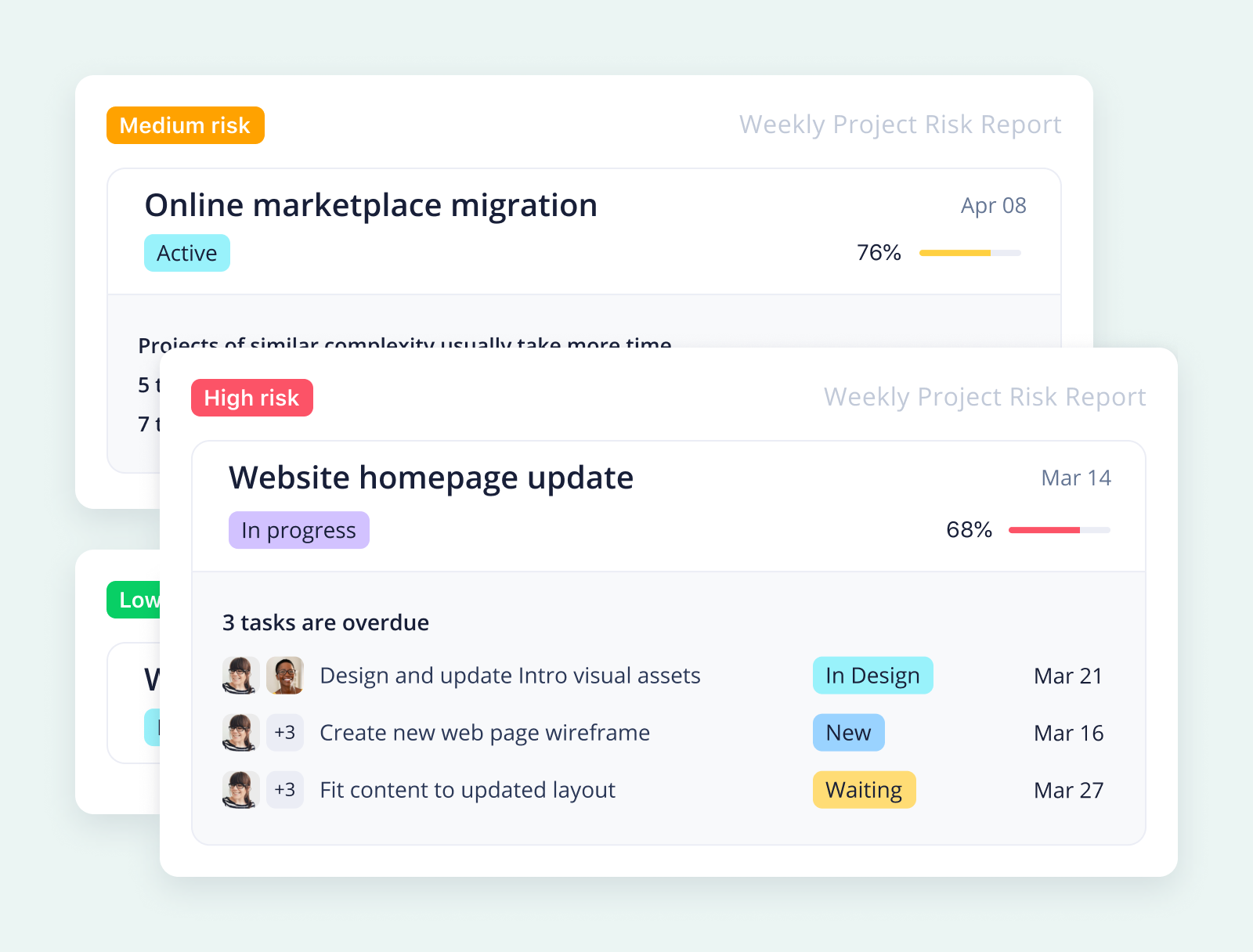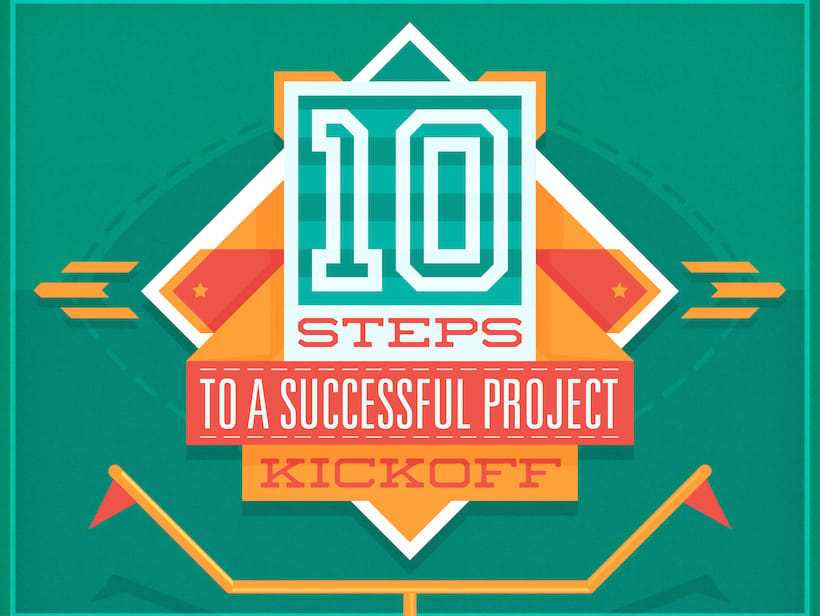Key takeaways:
- What is a risk assessment matrix? It’s a tool to identify, assess, and categorize project risks based on their likelihood and impact, enhancing project management success.
- Why use a risk assessment matrix? It helps prioritize risks, facilitates strategic planning, and reduces potential negative impacts on project outcomes.
- What challenges exist with risk matrices? Inaccurate assessments, poor decision-making, and oversimplification of risks can undermine effectiveness.
- How do you calculate risk in a matrix? Identify risks, define criteria, analyze using numerical values, and prioritize for action planning.
- Can I create a risk matrix in Excel or Wrike? Yes, both platforms allow you to build and customize matrices easily, with Wrike offering advanced features for real-time updates.
Imagine you’re the assigned project manager on a high-stakes project. The project scope is defined, key stakeholders are in agreement, you’re confident you can stay within the budget, and the project team is ready to dive in.
They start working tirelessly to meet the agreed-upon objectives — and then an unexpected risk meets you midway through the project. You never saw this one coming, so you have no idea how you’re going to get the project back on track and see it through to success.
If only you had identified and assessed the risk during the project planning phase, you might have felt more prepared to overcome it. That’s what a risk assessment matrix is used for and why you need this strategic risk analysis tool for your projects.
Get started right away with Wrike’s risk management tools.
What is a risk assessment matrix in project management?
Risks in project management are unexpected events that may or may not occur and impact your project outcome in some way. According to the Project Management Institute (PMI), analyzing and managing risks is a key practice in project management. It improves the chances of successful project completion while reducing the risk impact and any resulting consequences.
Risks can appear related to any aspect of a project, including the budget, resources, processes, or technology, to name just a few. For instance, you may experience operational risks like a breakdown in team communication, technical risks such as a data breach, or even external risks like natural disasters. While it can be easy to assume that all risks bring negative consequences to the table, it’s essential to understand that positive risks can also occur during the project lifecycle.
A risk assessment matrix (sometimes called a risk control matrix) is a tool used during the risk assessment stage of project planning. It identifies and captures the likelihood of project risks and evaluates the potential damage or interruption caused by those risks.
The risk assessment matrix offers a visual representation of the risk analysis and categorizes risks based on their level of probability and severity or impact. This comprehensive tool is a simple, effective way to get a holistic view of the project risks for all team members and key stakeholders.
Risk matrix example
Let’s take a look at the framework of a simple risk assessment matrix template for a project. We’re using a 5x5, five-point scale for the impact and probability of occurrence in this matrix example, but use a scale system that works best for your team. For example, you can use a 3x3 matrix for less granularity.
|
Impact or Severity |
||||||
|
Probability or Likelihood |
Insignificant |
Minor |
Moderate |
Major |
Catastrophic |
|
|
Very Likely |
Low-Medium |
Medium |
Medium-High |
High |
High |
|
|
Likely |
Low-Medium |
Low-Medium |
Medium |
Medium-High |
High |
|
|
Possible |
Low |
Low-Medium |
Medium |
Medium-High |
Medium-High |
|
|
Unlikely |
Low |
Low-Medium |
Low-Medium |
Medium |
Medium-High |
|
|
Very Unlikely |
Low |
Low |
Low-Medium |
Medium |
Medium |
|
In this color-coded example, you see risk categories ranging from low to high and likelihood ranging from very likely to very unlikely. Using it is as simple as any other matrix: You look for where both of your criteria meet to get your risk rating.
Let’s say you’re the project manager for a new organization-wide software tool rollout and will be working with a consultant to implement it. For this project, consultant delays are possible due to a lack of resources on their end — if a delay happens, the impact would be major because it would impact the entire rollout plan. We’d categorize this risk as medium-high based on the example matrix.
Ready to plan out your project and assess the level of risk? Test your mitigation strategies with Wrike.
What are the benefits of a risk assessment matrix?
You might be wondering if it’s worth spending the time to assess risks and create a matrix for all of your projects. Well, the benefits of a risk assessment matrix in the workplace speak for themselves:
- You can prioritize all risks with an understanding of the level of severity. Having an overview of all potential risks allows you to prioritize them against one another if there is more than one risk occurring. This prioritization will benefit your project team and help keep them on track if the project does go awry.
- You can devise strategies and allocate resources for the unexpected. While it’s impossible to fully plan for uncertainty, acknowledging and understanding what risks could occur provides an opportunity to create action plans for those unexpected events. Appropriately planning for risks may increase the likelihood of project completion and success.
- You’ll reduce or neutralize the impact of risks that occur. The unexpected consequences of a risk that’s not thought about in advance might feel more severe and damaging than a risk identified and analyzed early on. Having an awareness of the potential impact may reduce or neutralize the effect of a project risk before it occurs. Hope for the best, but prepare for the worst.
What are the challenges of a risk matrix?
While risk matrices can be very useful for identifying and preparing for project risks, they are not an answer to all your project problems. Here are some of the challenges of risk matrices:
- Inaccurate assessments: The risk matrix categories may not be specific enough to compare and differentiate between risk levels accurately. The likelihood and severity of certain risks are often subjective and therefore unreliable.
- Poor decision making: Incorrectly categorized risks can lead to poor decision making since you do not have an accurate picture of potential issues.
- Doesn’t account for time frames: Risk matrices don’t differentiate between risks that could occur two weeks from now and risks that could occur in two years’ time. There is no consideration of how risks could change over the years.
- Can oversimplify risks: The complexity and volatility of risks can be oversimplified — some risks remain the same over time, while others can change overnight.
How do you calculate risk in a risk matrix?
A risk matrix is a valuable tool for your project planning, and creating one doesn’t have to be complicated. Follow these steps to calculate risk for a project of your own.
Step 1: Identify the risks related to your project
To complete your risk assessment matrix, you need to start by having an in-depth understanding of your project — the scope, budget, resources, timeline, and goal. You’ll need this information to help you spot the potential risk(s).
Identify as many risks as you can with your project team. Consider aspects like scope creep, budgetary constraints, schedule impacts, and resource allocation as the starting points for your risk identification process. Create a risk register complete with all of the identified risks, as it will make it easier to create your matrix.
Step 2: Define and determine risk criteria for your project
No two risks and no two risk matrices are alike, which means you’ll need to work with your project team and key stakeholders to define and determine the risk criteria you’ll use to evaluate each risk you’ve identified.
Remember that two intersecting criteria need to be specified, each with its levels: the probability or likelihood that the risk will occur and the severity or impact the risk will have.
Step 3: Analyze the risks you’ve identified
After you’ve identified and described all of the potential risks, the next step is to analyze them. In your analysis, use your risk criteria to categorize each risk within its appropriate severity level and probability.
Many matrices assign a number value to criteria. So, sticking with our example, you might rate the impact ranging from one (insignificant) to five (catastrophic) and do the same with likelihood, where one represents very unlikely, and five represents very likely.
Using the matrix, it’s then easy to multiply severity times likelihood to get an impact score in the form of a number value. A risk that’s catastrophic and very likely would rank as a 25, whereas one that’s insignificant and very unlikely would rank as a one. It’s a simple and intuitive way to compare and understand risks.
Step 4: Prioritize the risks and make an action plan
The last part of your risk assessment matrix is to prioritize the risks and create a risk management plan to mitigate or neutralize them, with your risks categorized accordingly. You’ll want to outline the steps you’ll take if the risk does occur and the strategies you’ll deploy to help get the project back on track.
A risk matrix helps with effectively performing risk assessments and risk mitigation. Create one with Wrike today.
How do you create a risk matrix in Excel?
Wondering how to make a risk matrix in Excel? Start by building a table that reflects the probability and severity scales you’ve defined for your risk assessment. Here are a few tips and best practices to help you get started:
- After you’ve created your table, add your labels to the rows and columns. Use the columns for severity and rows for the likelihood of occurrence.
- Once you’ve labeled all of your column and row headers, add the definitions for each probability and risk severity level you’ve outlined with your team beneath the header title. This helps ensure the team is on the same page when ranking risks within the matrix.
- Use formatting options to color-coordinate the matrix for the best visual representation. You can use the stoplight system (red, yellow, green) for high, medium, and low risks, respectively. Color-coding allows any viewer to easily distinguish the risks based on the likelihood that they will occur and the amount of damage or interruption they’ll cause.
How do you create a risk matrix in Wrike?
If an Excel sheet isn’t your jam when it comes to tracking and monitoring risks, you can use Wrike to customize and develop a comprehensive risk matrix. Some of the key features Wrike has that you can use to assess project risk include:
- Custom fields that allow you to build out the severity and probability any way you want to. You could turn these into drop-down rankings on a one-to-five scale or use the text option to label your categories.
- Table view to provide greater visibility into the risks and a similar table to the one you can create in Excel.
- Reports and calculated fields to automate the data associated with your assessed risks.
- Interactive Gantt charts that allow you to create task dependencies and streamlined automation of changing project dates and deadlines. Project progress can be monitored in real time, which allows your team to keep risks top of mind, so the important stuff doesn’t get overlooked.
The best part about using a platform like Wrike is that it can automatically update and adjust as your project progresses, saving you from the manual work required in Excel.

What do you do with risk matrix results?
So, what does a risk matrix accomplish for you? The short answer is that your matrix results help you create a risk response plan.
To start with, it’s crucial to address anything that is high risk. Depending on the project and your team’s resources, you may only need to monitor the medium and low-risk categories rather than taking immediate action.
Finally, reference your risk matrix throughout the project until it’s marked complete and successful. Don’t make the mistake of not committing to risk management as an ongoing process. Using these risk assessment tools is a powerful, proactive way to support your project team and mitigate any bottlenecks that stand in the way between them and a winning project.
Are you ready to get ahead of the game and stop losing sleep over project risks? Sign up for a free trial of Wrike’s work management software to simplify your workflow and start building risk matrices with your team today.






